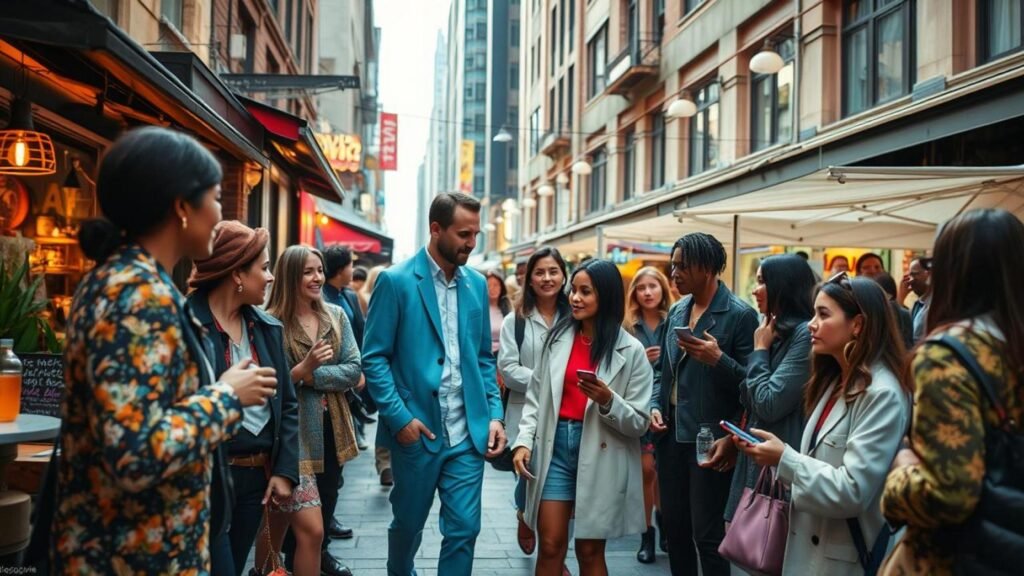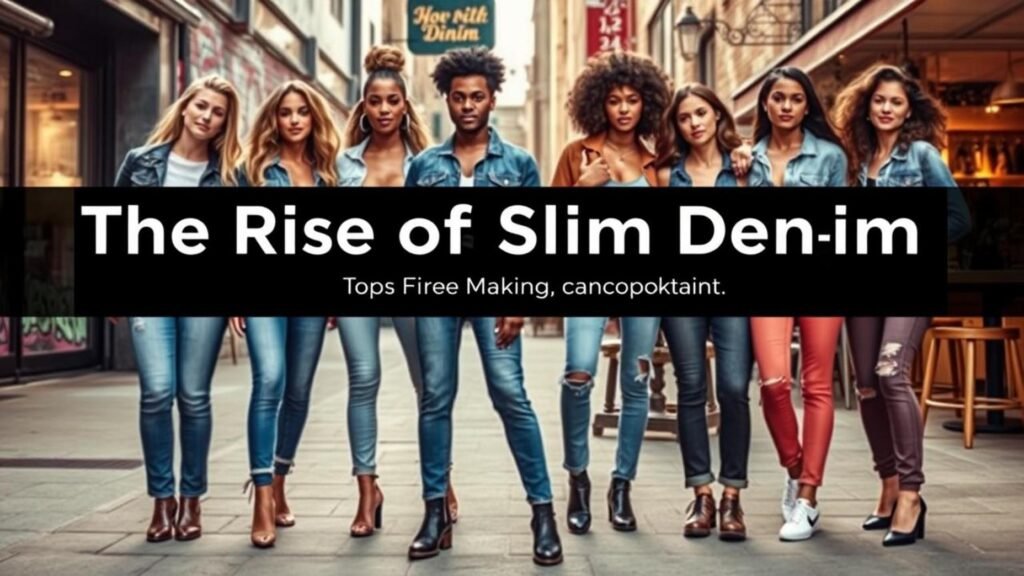Understanding the Vibe Economy: Defining Holistic Lifestyle Trends
The concept of the vibe economy is an evolving paradigm that transcends traditional economic models by focusing on emotional resonance and cultural relevancy rather than merely transactional associations. This phenomenon is emerging in contemporary culture, shaping not just consumer preferences but also broader cultural environments. As consumers increasingly gravitate towards brands that align with their personal and collective identities, lifestyle vibes have come to reflect deeper societal values and shifts that go beyond fleeting micro-trends.
- Cultural Shifts Reflected in Vibe Economy
At its core, the vibe economy captures the essence of cultural shifts taking place globally. The rise of social media has amplified the importance of aesthetic coherence, where lifestyle choices are heavily influenced by the visual narratives presented online. Platforms like Instagram and TikTok have become arenas where cohesive “vibes” attract digital communities and foster brand loyalty. This aligns with predictions regarding fashion trends of 2025, emphasizing an integrative and aesthetic approach to marketing and consumption.
In this atmosphere, brands are tasked with curating experiences that resonate emotionally with their audience. This **emotional connection** translates into consumer loyalty and advocacy, showcasing how lifestyle vibes influence purchasing decisions. For instance, companies that adopt a socially responsible ethos or emphasize sustainability often find success in reaching consumers who prioritize these values. Hence, the cultural shifts associated with the vibe economy reflect a collective desire for authenticity and connection in a fragmented world.
- Holistic Approaches to Lifestyle Choices
As we navigate through 2025 and beyond, the intersection of lifestyle and culture continues to evolve. The vibe economy supports a holistic approach to lifestyle, encouraging individuals to curate their lives—not only through clothing choices but also in how they engage with environments, relationships, and their broader communities. Trends like digital nomadism, wellness-focused consumerism, and the importance of mental health are indicative of this shift.
To further explore these cultural phenomena, understanding how they relate to existing lifestyle and technology trends is essential. Articles like “Understanding Digilocker: Revolutionizing Document Management” delve into how technology integrates with lifestyle trends, reflecting a growing trend toward enhanced mobility and efficiency. These technologies cater to practicality while embodying the aesthetic and communal vibes valued by modern consumers.
Embracing the **vibe economy** means recognizing that our choices—what we consume, how we present ourselves, and the communities we foster—are deeply interwoven with cultural narratives. As we progress, these insights will continue to guide individuals and brands alike, paving the way for a more interconnected and purpose-driven future in fashion and culture.
Fashion Trends 2025: Vibe Economy’s Impact on the Industry
As we look forward to 2025, the convergence of the vibe economy with fashion trends reveals a significant shift in how brands approach consumer engagement and aesthetic presentation. Characterized by the elevation of emotional resonance and lifestyle coherence, the vibe economy is prompting fashion labels to focus on cohesive aesthetics that resonate deeply with diverse consumer bases.
- Shifts in Aesthetic Values
In the context of the vibe economy, brands are not merely selling clothing; they are curating experiences that reflect shared values, lifestyles, and emotions. This shift will manifest in the rise of styles that champion inclusivity and sustainability, addressing a growing consumer demand for authenticity. As Business of Fashion notes, brands successfully aligning their identities with consumer sentiments are more likely to thrive in this new landscape.
- The Rise of Digital Communities
Moreover, social media platforms will play a central role in shaping fashion trends. As cultural shifts continue to favor community over individuality, we can expect a surge in hyper-niche fashion segments led by online communities. According to Forbes, brands that embrace collaborative design processes and directly engage with their audiences will set the pace for future trends. By creating interactive spaces for consumers to share their style ideas, brands can cultivate a loyal following that thrives on collective fashion experiences.
- Sustainable and Purpose-Driven Fashion
The vibe economy’s prioritization of individual expression also indicates that environmental consciousness will define fashion trends in 2025. The demand for sustainable practices in production and distribution is expected to intensify. Brands embracing ethical sourcing and circular fashion will gain an edge. Reports from McKinsey & Company underline that integrating sustainable materials and transparent supply chains will appeal not only to eco-conscious consumers but also set new industry standards.
As the vibe economy continues to evolve, so too will the fashion landscape in 2025. By fostering emotional connections, embracing community initiatives, and prioritizing sustainability, brands will navigate this dynamic culture shift. The ability of brands to adapt and innovate will prove pivotal in capturing the hearts and wardrobes of tomorrow’s consumers.

Cultural Shifts: From Micro-Trends to Meaningful Engagement
The transition to the vibe economy reflects significant cultural shifts that fundamentally alter consumer behavior and brand engagement across industries. As we move toward 2025, these shifts highlight a growing preference for brands resonating on deeper emotional and social levels, rather than merely executing fleeting micro-trends.
One of the key drivers of this transformation is the increasing consumer awareness regarding sustainability and ethical practices. Today’s educated consumers prioritize brands that demonstrate authenticity and accountability. As documented in a report by Statista, approximately 66% of global respondents consider sustainability when purchasing clothing. This demand encourages brands to shift away from fast fashion and embrace a more conscientious approach to production that aligns with their audience’s values.
Social media platforms further amplify this cultural trend. Influencers and brand ambassadors play pivotal roles in shaping consumer perceptions, often seen as genuine representatives of the lifestyles they promote. Research from HBC asserts that engagement levels of influencer campaigns are notably higher than traditional advertising methods, underlining the need for brands to connect meaningfully with their audiences.
Moreover, the concept of community engagement is changing how brands navigate consumer relationships. With the rise of social commerce, platforms like TikTok and Instagram have transformed shopping into a social experience where consumers are active contributors. As highlighted by Business of Business, brands successfully cultivating communities aligned with their vibes can foster loyalty and advocacy among consumers.
The fashion trends of 2025 will undoubtedly be defined by these cultural shifts. The brands that adapt to this new landscape will be those that prioritize connection, sustainability, and authenticity, paving the way for a more engaged and conscientious consumer base. Fashion is no longer just about what you wear; it’s about what you value and with whom you share those values. This evolution emphasizes the significance of understanding cultural dynamics as we advance further into the vibe economy, fostering a more meaningful engagement between consumers and brands.
Practical Applications: Embracing the Vibe Economy in Everyday Life
As we delve deeper into the vibe economy, it’s crucial for individuals and brands to adopt strategies that resonate with emerging cultural trends and holistic vibes. The vibe economy reflects a profound shift in how people connect with brands, communities, and themselves. Here are some actionable insights to navigate this transformative landscape.
Cultivating a Resonant Lifestyle
1. **Mindful Consumption**: Aligning purchasing habits with brands prioritizing sustainability and authenticity can significantly enhance your lifestyle in the vibe economy. Look for labels practicing ethical sourcing and communicating transparency in their supply chains. For example, brands like Nike are making strides toward more environmentally friendly practices, resonating with conscious consumers.
2. **Engaging Community Spaces**: Create and participate in community-centered events celebrating culture and creativity. These might include local art shows, fashion pop-ups, or cultural festivals. Engagement fosters a sense of belonging and aligns with broader cultural shifts driving the vibe economy. Brands like Palace Skateboards exemplify this by creating community-driven experiences around their products.
3. **Personal Branding through Authenticity**: Individuals should reflect their true selves in personal branding. This means showcasing passions, values, and beliefs authentically across social media and personal interactions. Brands highlighting authenticity, like TOMS, engage consumers seeking more than products—they’re looking for shared values and connection.
Brands Adapting to Cultural Shifts
For brands aiming to thrive in this vibe economy, understanding and adapting to cultural shifts is imperative. Consider these strategies:
1. **Storytelling and Emotional Connection**: Brands should emphasize storytelling in their marketing strategies to forge emotional connections with consumers. This approach creates a deeper relationship based on shared human experiences rather than mere transactions. Platforms like Shopify outline effective ways to weave brand stories that resonate with audiences.
2. **Integrating Technology and Experience**: In the fashion landscape, technology revolutionizes how consumers interact with brands. Utilizing tools such as AR for virtual try-ons or AI-driven recommendations enhances the shopping experience, providing the seamless integration consumers crave. A report by McKinsey & Company illustrates how retail brands leverage technology to meet evolving consumer expectations.
3. **Building Inclusive Narratives**: Emphasizing diversity and inclusion in marketing campaigns helps brands connect with broader audiences while contributing positively to societal narratives. Brands like Fenty Beauty have set a benchmark for inclusivity by offering a wide range of products suitable for all skin tones, demonstrating how cultural shifts can be integrated into brand strategies.
By embracing these insights and strategies, individuals and brands can thrive within the vibe economy, transforming their connections with culture, fashion, and community. As we approach fashion trends 2025, staying attuned to the underlying currents of the vibe economy will be essential for future success. For further exploration on technological impacts in the style landscape, check out our article on AI’s role in fashion.
Sources
- Digihetu – 10 Best Free Automation Tools That Will Transform Your Workflow
- Digihetu – AI Tools for Solopreneurs: Top 5 Productivity Apps to Boost Success
- Digihetu – Gemini AI vs GPT-4o: Comparison
- Business of Fashion – The Vibe Economy is Dominating the Fashion Industry
- Business of Business – How Social Commerce Will Impact Future Buying Patterns in America
- Forbes – How the Vibe Economy is Influencing Fashion Branding
- HBC – The Influence of Social Media on Fashion Trends
- McKinsey & Company – The Business of Fashion and the Vibe Economy
- McKinsey & Company – The State of Fashion 2025
- Statista – Sustainable Fashion
- Shopify – Storytelling in Marketing
- Nike – Sustainability Initiatives
- Palace Skateboards – Community-Driven Experiences
- TOMS – Brand Values
- Fenty Beauty – Inclusivity in Beauty


